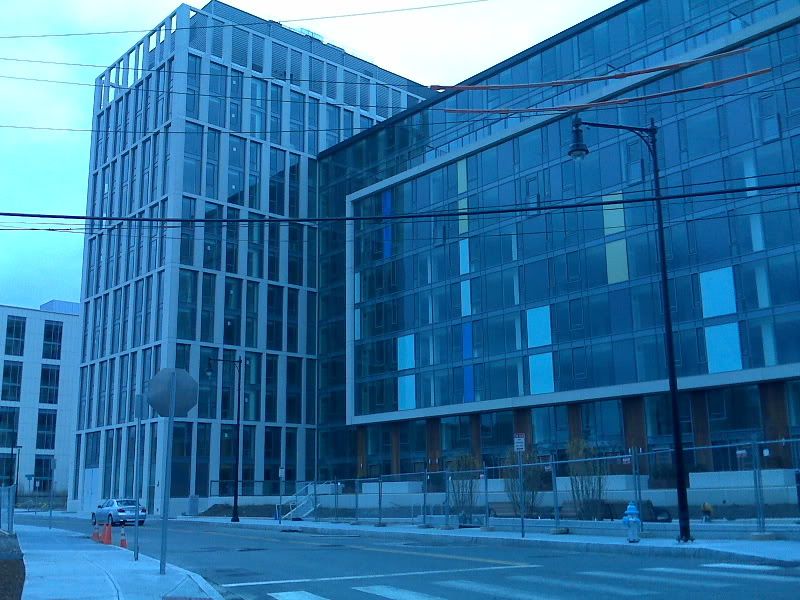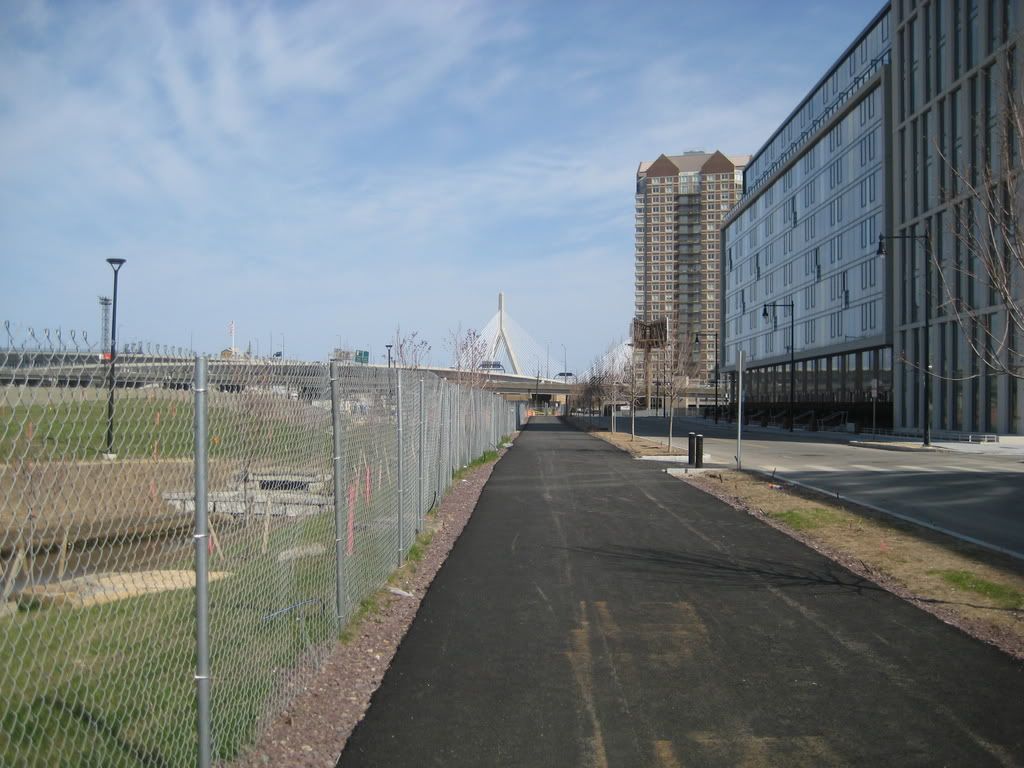Re: NorthPoint Cambridge
this could be the explanation for the missing bridge:
http://www.boston.com/news/local/ma...11/25/on_the_charles_new_parks_missing_links/
By Peter DeMarco
Globe Correspondent / November 25, 2007
It all looked so promising 15 years ago, when $80 million seemed like more money than anyone could possibly spend on bike paths and parklands.
more stories like this
The year was 1993, and to make amends for building a massive bridge across the Charles River, state officials in charge of the Central Artery/Tunnel Project pledged the then-unprecedented sum toward revitalizing the river's "lost half-mile," the stretch between Monsignor O'Brien Highway by the Museum of Science and the Charlestown Bridge that had been an industrial dumping ground for decades.
But as with nearly all things Big Dig, the budget, it turned out, wasn't nearly enough to pay for what was envisioned.
The Central Artery had the funds to construct three impressive parks along the New Charles River Basin, two in Boston and one in Cambridge. But little else that was promised - the pedestrian bridges linking the parks together, basketball and tennis courts, additional parklands, improvements to historic dam buildings - ever materialized.
In just five weeks, the Central Artery/Tunnel Project will come to an official end, as the administration that guided one of the world's biggest construction jobs will dissolve Dec. 31 into its overseeing body, the Massachusetts Turnpike Authority.
Without the missing links - among them, lengthy pedestrian bridges on the north and south banks of the river looping over North Station's railroad tracks, and a pedestrian bridge across the river - some of the paths go nowhere, and the parks that have been built are dead ends.
At best, it appears there is enough money left to pay for just one of the bridges, the north bank bridge, which would link Cambridge's North Point Park to Charlestown's Paul Revere Park.
"Without those bridges, without those connections, this looks like a boondoggle," said Bob Zimmerman, executive director of the Charles River Watershed Association. "Without access to these last half-mile of parks, which are absolutely stunning, nobody will figure out how to get to them. And once you're there, you're not really certain how you're going to get out of there."
So, what went wrong?
The most obvious glitch was North Point Park's mildly contaminated soil, which required $14 million to be spent on environmental remediation. In addition, logistical and technical issues plagued the river basin's biggest pedestrian bridges. An awkward division of labor didn't help: While the Central Artery built and paid for the basin's parks and paths, a different agency, the state Department of Conservation and Recreation, was responsible for designing them.
Dan Wilson, a volunteer member of the Citizens Advisory Committee for the New Charles River Basin since 1995, points to the 2006 tunnel collapse, when a Jamaica Plain woman was killed and $54 million spent to repair faulty tunnel ceilings, as a factor. "I think we probably had a good chance of getting some additional money from the Turnpike to finish the basin, but I think that chance evaporated with that accident," he said. "That was a budget-buster."
In June, a leaders of a dozen community groups sent a letter to Big Dig officials asking them to agree to a "priority spending plan" for the remaining river basin projects. The list included just six items. They got no response.
more stories like this
On what's arguably the most important remaining pedestrian bridge - a complex, 960-foot passing above the railroad tracks between Cambridge and Charlestown, the lowest bid from a contractor came in way over budget - at $15 million, about $9 million more than was anticipated. The Artery now believes it will cost about $24 million to build the footbridge and basic pathways leading to and from it, plus a few million more for a DCR maintenance facility, leaving almost nothing left over for anything else.
When Fred Yalouris, director of architecture and urban design for the Turnpike Authority's Central Artery project, broke the news to activists at an Oct. 30 public meeting, the disappointment was palpable.
Yalouris said a new contract request will be put out to bid for the pedestrian bridge by Jan. 1. With any luck a lower bid will be submitted, he said, and some of the smaller items can be added back in.
As for the basin properties, the Turnpike Authority is committed to building the north bank bridge and whatever else is included in the Jan. 1 bid, Yalouris said. But, he stressed, the agency is under no obligation to do anything beyond that.
What more can be done if state officials don't come through? Potentially, a few things.
Robert O'Brien of the business-oriented Downtown North Association, and Joel Bard, chairman of the New Charles River Basin Citizens Advisory Committee, have sent a letter to the Legislature asking for a one-time appropriation of $10 million to restore the cuts announced at the Oct. 30 meeting. But the Legislature would need to act before Dec. 31, O'Brien said, for the Turnpike Authority to administer the funds.
Wilson said it's possible that an interested party - or even state environmental officials - could file a lawsuit against the Central Artery to enforce the 1993 environmental mitigation requirements, which included the missing pedestrian bridges.
Others say it will be up to private developers to eventually build the missing pieces of the New Charles River Basin.
The role model would be Lovejoy Wharf, whose developer, Ajax Management Partners LLC of Lexington, is spending nearly $10 million on a wide pedestrian veranda along the Charles River that will connect to Central Artery-built basin pieces. Massachusetts General Hospital and other North Station developers could also be asked to pitch in money, to a general basin fund, when ordered by the city of Boston to pay construction mitigation fees.
If Spaulding Rehabilitation Hospital is sold in the near future, as some expect it will be, its developer will likely be asked to help pay for the missing south bank pedestrian bridge, expected to cost $15 million to $20 million.
None of those solutions, however, appear imminent. Thanks to the Central Artery and the DCR, the New Charles River Basin is vastly improved over the industrial no-man's land it had been for decades. But for the foreseeable future, the basin's missing links will remain just that - missing.





